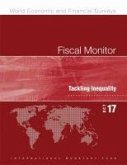The evolution of risk management has resulted from the interplay of financial crises, risk management practices, and regulatory actions. In the 1970s, research lay the intellectual foundations for the risk management practices that were systematically implemented in the 1980s as bond trading revolutionized Wall Street. Quants developed dynamic hedging, Value-at-Risk, and credit risk models based on the insights of financial economics. In parallel, the Basel I framework created a level playing field among banks across countries. Following the 1987 stock market crash, the near failure of Salomon Brothers, and the failure of Drexel Burnham Lambert, in 1996 the Basel Committee on Banking Supervision published the Market Risk Amendment to the Basel I Capital Accord; the amendment went into effect in 1998. It led to a migration of bank risk management practices toward market risk regulations. The framework was further developed in the Basel II Accord, which, however, from the very beginning, was labeled as being procyclical due to the reliance of capital requirements on contemporaneous volatility estimates. Indeed, the failure to measure and manage risk adequately can be viewed as a key contributor to the 2008 global financial crisis. Subsequent innovations in risk management practices have been dominated by regulatory innovations, including capital and liquidity stress testing, macroprudential surcharges, resolution regimes, and countercyclical capital requirements.
Hinweis: Dieser Artikel kann nur an eine deutsche Lieferadresse ausgeliefert werden.
Hinweis: Dieser Artikel kann nur an eine deutsche Lieferadresse ausgeliefert werden.








